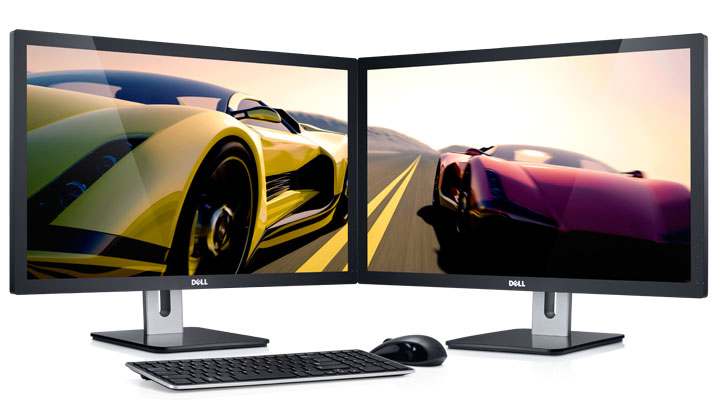Keeping up with dual screen monitors: Why I decided against it

Dell
My millennial brother-in-law chided me recently for using only a single monitor. “Get with the times,” he joked. “Two screens will boost your productivity.”
I’m normally confident about my technology use, but his remark surprised me since no one had questioned the size of my desktop display before. Keep in mind, I’ve worked from home for over a decade, so I don’t get to see how the Jones’ use computers at work. I don’t see their workspaces—only their faces over Skype calls or in conference rooms or voices over phones or words over email.
Self consciously, I began asking family and friends if they used dual monitors at work. “All the time,” said one. “Have for years,” said another. “Will never go back!” exclaimed a third. With exception to one, all my inquires said “yes.” Even my dad and father-in-law use dual screens at work. BABY BOOMERS MORE WIRED THAN ME??!!
Feeling inadequate, I started researching monitors to “get with the times.” I encountered studies showing their use can improve productivity by as much as 50%. I read this ringing endorsement of them by New York Times writer Ivan Berger in 2006, the year the technology went mainstream: “Adding a second monitor turned out to be the easiest, most cost-effective and significant improvement in my work since I replaced my modem with high-speed internet.”
I gotta get a second monitor, I thought to myself. Better yet, what if I purchased two ridiculously sized ones? Bigger than the single 27″ widescreen one I use.
Turns out, 27″ is as big as most come, at least the crystal clear LCD ones that are ideal for computing. Nevertheless, I was still set on adding a second screen to my repertoire. Then suddenly, my system two thinking kicked in.
“Blake, are you the ideal worker that would benefit from dual monitors… say someone working in high-finance, graphic design, architecture, engineering, or video editing?”
“No. I sit in front of a word processor or read most of the day.”
“Do you multitask?”
“Never touch the stuff.”
“Are you happy with your productivity?”
“Yes—as a matter of fact, I am. What’s more, I’ve been complimented for being ‘very prolific’ at work. So it would seem I’m doing just fine, if not well, with a single monitor.” (Editor’s note: The author said he was “feeling pretty good about himself” at this point.)
And just like that, I changed my mind.
This isn’t to say I’ll never “upgrade” to dual monitors. After all, I’m a serial late adopter. But for now, I’m content with my minority status.
